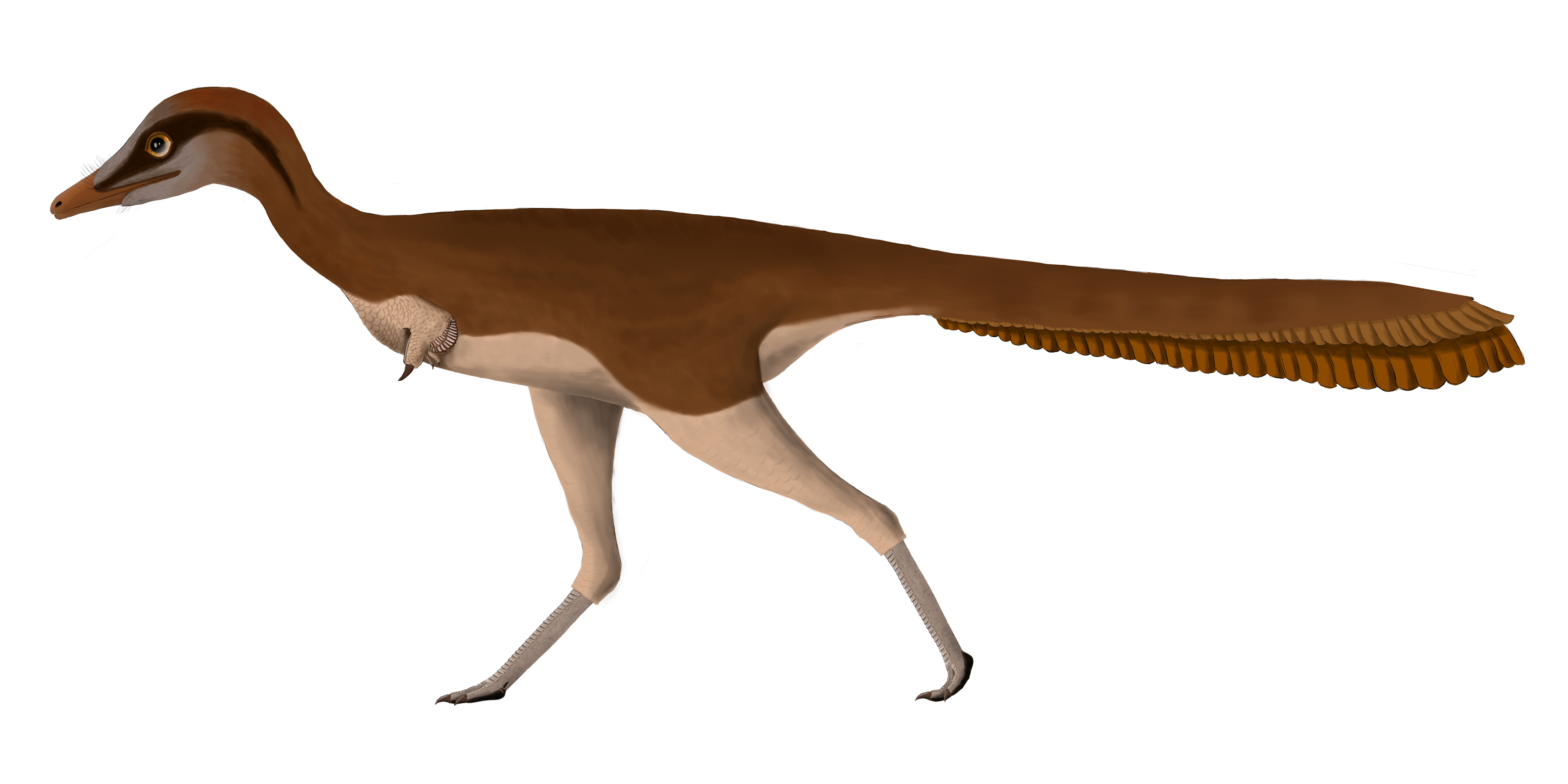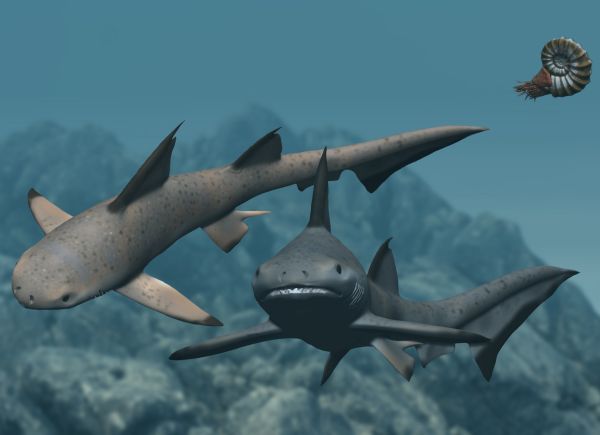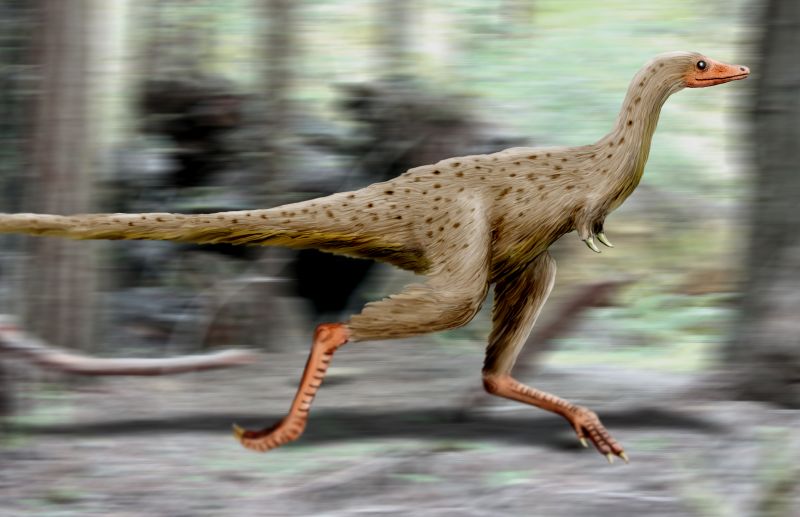|
Dzharaonyx
''Dzharaonyx'' (meaning "Dzharakuduk claw", named after the type locality) is a genus of alvarezsaurid theropod dinosaur from the Late Cretaceous Bissekty Formation of Uzbekistan. The type species is ''Dzharaonyx eski''; ''eski'' being an Uzbek word for "old". Description ''Dzharaonyx'' is known from a series of disassociated but well-preserved postcranial material. The form of the humerus is intermediate between that of ''Patagonykus'' and ''Mononykus''. Classification Phylogenetic analysis places ''Dzharaonyx'' in a polytomy including other Asian members of Parvicursorinae. This makes it the oldest parvicursorine known to date. Paleoenvironment ''Dzharaonyx'' lived in the Bissekty Formation, which has been intensively studied in recent years. It represents a brackish environment. It coexisted with larger theropods including the dromaeosaurid ''Itemirus'', the tyrannosauroid ''Timurlengia'', and the troodontid ''Urbacodon''. The hadrosaur ''Levnesovia'', ankylosaurs, an ... [...More Info...] [...Related Items...] OR: [Wikipedia] [Google] [Baidu] |
Alvarezsaurids
Alvarezsauridae is a family of small, long-legged dinosaurs. Although originally thought to represent the earliest known flightless birds, they are now thought to be an early diverging branch of maniraptoran theropods. Alvarezsaurids were highly specialized. They had tiny but stout forelimbs, with compact, bird-like hands. Their skeletons suggest that they had massive breast and arm muscles, possibly adapted for digging or tearing. They had long, tube-shaped snouts filled with tiny teeth. They have been interpreted as myrmecophagous, adapted to prey on colonial insects such as termites, with the short arms acting as effective digging instruments to break into nests. ''Alvarezsaurus'', the type genus of the family, was named for the historian Gregorio Álvarez. History of study Bonaparte (1991) described the first alvarezsaurid, ''Alvarezsaurus calvoi'', from an incomplete skeleton found in Patagonia, Argentina. Bonaparte also named a family, Alvarezsauridae, to contain it. He a ... [...More Info...] [...Related Items...] OR: [Wikipedia] [Google] [Baidu] |
Parvicursorinae
Alvarezsauridae is a family of small, long-legged dinosaurs. Although originally thought to represent the earliest known flightless birds, they are now thought to be an early diverging branch of maniraptoran theropods. Alvarezsaurids were highly specialized. They had tiny but stout forelimbs, with compact, bird-like hands. Their skeletons suggest that they had massive breast and arm muscles, possibly adapted for digging or tearing. They had long, tube-shaped snouts filled with tiny teeth. They have been interpreted as myrmecophagous, adapted to prey on colonial insects such as termites, with the short arms acting as effective digging instruments to break into nests. ''Alvarezsaurus'', the type genus of the family, was named for the historian Gregorio Álvarez. History of study Bonaparte (1991) described the first alvarezsaurid, ''Alvarezsaurus calvoi'', from an incomplete skeleton found in Patagonia, Argentina. Bonaparte also named a family, Alvarezsauridae, to contain it. He a ... [...More Info...] [...Related Items...] OR: [Wikipedia] [Google] [Baidu] |
Alvarezsaurid
Alvarezsauridae is a family of small, long-legged dinosaurs. Although originally thought to represent the earliest known flightless birds, they are now thought to be an early diverging branch of maniraptoran theropods. Alvarezsaurids were highly specialized. They had tiny but stout forelimbs, with compact, bird-like hands. Their skeletons suggest that they had massive breast and arm muscles, possibly adapted for digging or tearing. They had long, tube-shaped snouts filled with tiny teeth. They have been interpreted as myrmecophagous, adapted to prey on colonial insects such as termites, with the short arms acting as effective digging instruments to break into nests. ''Alvarezsaurus'', the type genus of the family, was named for the historian Gregorio Álvarez. History of study Bonaparte (1991) described the first alvarezsaurid, ''Alvarezsaurus calvoi'', from an incomplete skeleton found in Patagonia, Argentina. Bonaparte also named a family, Alvarezsauridae, to contain it. He a ... [...More Info...] [...Related Items...] OR: [Wikipedia] [Google] [Baidu] |
Alvarezsauridae
Alvarezsauridae is a family of small, long-legged dinosaurs. Although originally thought to represent the earliest known flightless birds, they are now thought to be an early diverging branch of maniraptoran theropods. Alvarezsaurids were highly specialized. They had tiny but stout forelimbs, with compact, bird-like hands. Their skeletons suggest that they had massive breast and arm muscles, possibly adapted for digging or tearing. They had long, tube-shaped snouts filled with tiny teeth. They have been interpreted as myrmecophagous, adapted to prey on colonial insects such as termites, with the short arms acting as effective digging instruments to break into nests. ''Alvarezsaurus'', the type genus of the family, was named for the historian Gregorio Álvarez. History of study Bonaparte (1991) described the first alvarezsaurid, ''Alvarezsaurus calvoi'', from an incomplete skeleton found in Patagonia, Argentina. Bonaparte also named a family, Alvarezsauridae, to contain it. He a ... [...More Info...] [...Related Items...] OR: [Wikipedia] [Google] [Baidu] |
Ondogurvel
''Ondogurvel'' () (meaning "egg lizard") is a genus of alvarezsaurid dinosaur from the Late Cretaceous (Campanian) Barun Goyot Formation in southern Mongolia. The type and only species is ''O. alifanovi'', known from a partial skeleton consisting of fragments of two last dorsal vertebrae, three anterior sacral vertebrae, right ilium, left and right pubis and ischium, articulated right tibia, fibula, metatarsals II and IV, and phalanges IV-1 and IV-2, right carpometacarpus, left and right manual phalanx II-1, right femur, left pedal phalanx II-1, and fragments of unidentified phalanges. Discovery and naming In 2022, the type species ''Ondogurvel alifanovi'' was named and described by Alexander O. Averianov and Alexey V. Lopatin. The generic name, "''Ondogurvel''" combines the Mongolian words өндөг “ondo” (), meaning egg, and гүрвэл “gurvel” (), meaning lizard. The specific name, "''alifanovi''" () honors the late Russian paleontologist Vladimir Alifanov who fou ... [...More Info...] [...Related Items...] OR: [Wikipedia] [Google] [Baidu] |
2022 In Archosaur Paleontology
This article records new taxa of fossil archosaurs of every kind that are scheduled described during the year 2022, as well as other significant discoveries and events related to paleontology of archosaurs that are scheduled to occur in the year 2022. Pseudosuchians New pseudosuchian taxa General pseudosuchian research * A study on the mandible embryogenesis in extant caimans, and on its implications for the knowledge of the evolution of postdentary lower jaw of pseudosuchians, is published by Bona ''et al.'' (2022). * A study on the musculature of crocodylian and fossil suchian jaws, investigating the impact of the flattening of the skulls of suchians in their evolutionary history on their muscle anatomy, is published by Sellers ''et al.'' (2022). * Revision of ''Tsylmosuchus donensis'' and ''Scythosuchus basileus'' is published by Sennikov (2022), who interprets the latter taxon as a junior synonym of the former one, and interprets ''T. donensis'' as a likely member of ... [...More Info...] [...Related Items...] OR: [Wikipedia] [Google] [Baidu] |
Khulsanurus
''Khulsanurus'' (meaning "tail from Khulsan") is an extinct genus of alvarezsaurid theropod dinosaur from the Late Cretaceous Barungoyot Formation of the Khulsan Locality in the Gobi Desert region of Mongolia. The type and only species is ''Khulsanurus magnificus''. Description ''Khulsanurus'' is known from a holotype containing partial vertebral series of the neck and tail, scapulocoracoids, a right humerus, a possible left humerus, and a left pubis. Distinguishing autapomorphies of this specimen include pleurocoel-, carotid process-, and epipophysis-less cervical vertebrae, prominent infrapostzygapophyseal fossa of the caudal vertebrae which also bear anteriorly pointing prezygapophyses. Classification Averianov & Lopatin (2021) placed ''Khulsanurus'' in a polytomy with ''Albinykus'', ''Ceratonykus'', ''Linhenykus'', ''Parvicursor'', ''Xixianykus'', ''Qiupanykus'', ''Nemegtonykus'', PIN 5838/1 (=''Ondogurvel'') and a clade containing ''Shuvuuia'' and ''Mononykus'' in a str ... [...More Info...] [...Related Items...] OR: [Wikipedia] [Google] [Baidu] |
Bissekty Formation
The Bissekty Formation (sometimes referred to as Bissekt) is a geologic formation and Lagerstätte which crops out in the Kyzyl Kum desert of Uzbekistan, and dates to the Late Cretaceous Period. Laid down in the mid to late Turonian, it is dated to about 92 to 90 Ma (million years ago). Description The lithology of the sediment largely consists of cross bedded sandstones with interbeds of massive sandstone, well cemented intraformational conglomerate, siltstones and mudstones. Most of the fossils are found as clasts within the conglomerates. Fossil content The Bissekty Formation is characterised by a mix of marine, brackish, freshwater, and terrestrial animal fossils. This stands in contrast the strictly marine fossils found in the underlying Dzheirantui Formation, and indicates that the Bissekty was formed during the regression of a saltwater sea. The coastline expanded inland again in the upper portion of the Bissekty, represented by a proportional increase of fully aquat ... [...More Info...] [...Related Items...] OR: [Wikipedia] [Google] [Baidu] |
Timurlengia
''Timurlengia'' is an extinct genus of tyrannosauroid theropod dinosaur found in Uzbekistan, in the Bissekty Formation in the Kyzylkum Desert, hailing from the Turonian age of the early Late Cretaceous. The type species is ''Timurlengia euotica''. Discovery From 1944 onwards, tyrannosauroid fossil material consisting of single bones has been described from the Bissekty Formation by Soviet or Russian researchers. In 2004 a team discovered a braincase, which would have anchored the dinosaur's neck muscles and protected its brain and ear canals. The braincase was stored in a cardboard box in the Zoological Institute of the Russian Academy of Sciences, until tyrannosaur expert Steve Brusatte identified it as a distinctive new species in 2014. In 2016, Stephen Louis Brusatte, Alexander Averianov, Hans-Dieter Sues, Amy Muir, and Ian B. Butler named and described the type species ''Timurlengia euotica''. The genus is named after Timurleng, founder of the Timurid Empire in Central Asia. ... [...More Info...] [...Related Items...] OR: [Wikipedia] [Google] [Baidu] |
Urbacodon
''Urbacodon'' ("URBAC tooth") is a genus of troodontid dinosaur, a type of small carnivore. It lived in Uzbekistan during the early Late Cretaceous Period, about 95 million years ago. On 9 September 2004, a lower jaw of a small theropod was uncovered by Anton Sergeevich Rezwiy near Itemir in the IT-01 quarry. The type species, ''Urbacodon itemirensis'', was named by Alexandr Averianov and Hans-Dieter Sues in 2007. The first part of the generic name ''Urbacodon'' is an acronym, honouring the Uzbek, Russian, British, American and Canadian scientists who participated in its discovery. This acronym was combined with a Greek ὀδών, ''odon'', "tooth". The specific name refers to the provenance from Itemir. The name was based on the holotype ZIN PH 944/16, a single left dentary with preserved replacement teeth from the Cenomanian Dzharakuduk Formation. Averianov and Sues also identified teeth and other material, earlier described by Lev Nesov, as a ''Urbacodon'' sp. ... [...More Info...] [...Related Items...] OR: [Wikipedia] [Google] [Baidu] |
Linhenykus
''Linhenykus'' is an extinct genus of alvarezsaurid theropod dinosaur from the Late Cretaceous of Inner Mongolia, China. It is the most basal known member of the Parvicursorinae. The genus gets its name from Linhe, a city near the site where the fossil was first found and Greek ''nykus'', "claw". The specific name is derived from Greek ''monos'', "single", and ''daktylos'', "finger", a reference to the fact that it is the only known non-avian dinosaur to have had but a single digit. Description ''Linhenykus'' was a small dinosaur, measuring long and weighing . Its femur length is . Alvarezsauroids are known for their short forelimbs, each with a single greatly enlarged second digit. Although alvarezsaurids were once thought to have only a single digit on each forelimb, more recent evidence has shown that most species have reduced third and fourth digits. ''Linhenykus'' is the first known alvarezsaurid to have only a single, second digit. Although a reduced third metacarpal ... [...More Info...] [...Related Items...] OR: [Wikipedia] [Google] [Baidu] |
PALAIOS
''PALAIOS'' is a bimonthly academic journal dedicated to the study of the impact of life on Earth history, combining the fields of palaeontology and sedimentology. It has been published by the Society for Sedimentary Geology since its inception in 1986. Although not an acronym An acronym is a word or name formed from the initial components of a longer name or phrase. Acronyms are usually formed from the initial letters of words, as in ''NATO'' (''North Atlantic Treaty Organization''), but sometimes use syllables, as ..., the title PALAIOS is capitalized.e.g. References Geology journals Paleontology journals Publications established in 1986 Bimonthly journals {{paleontology-journal-stub ... [...More Info...] [...Related Items...] OR: [Wikipedia] [Google] [Baidu] |




